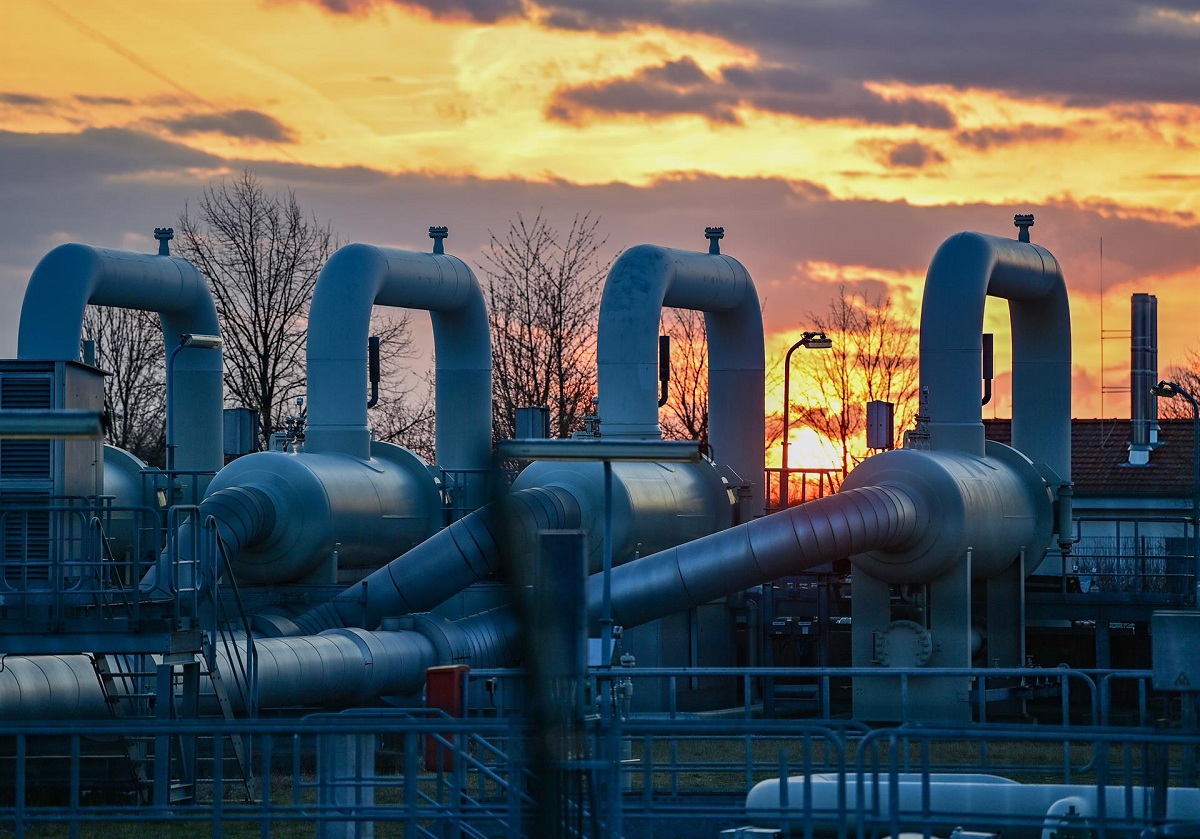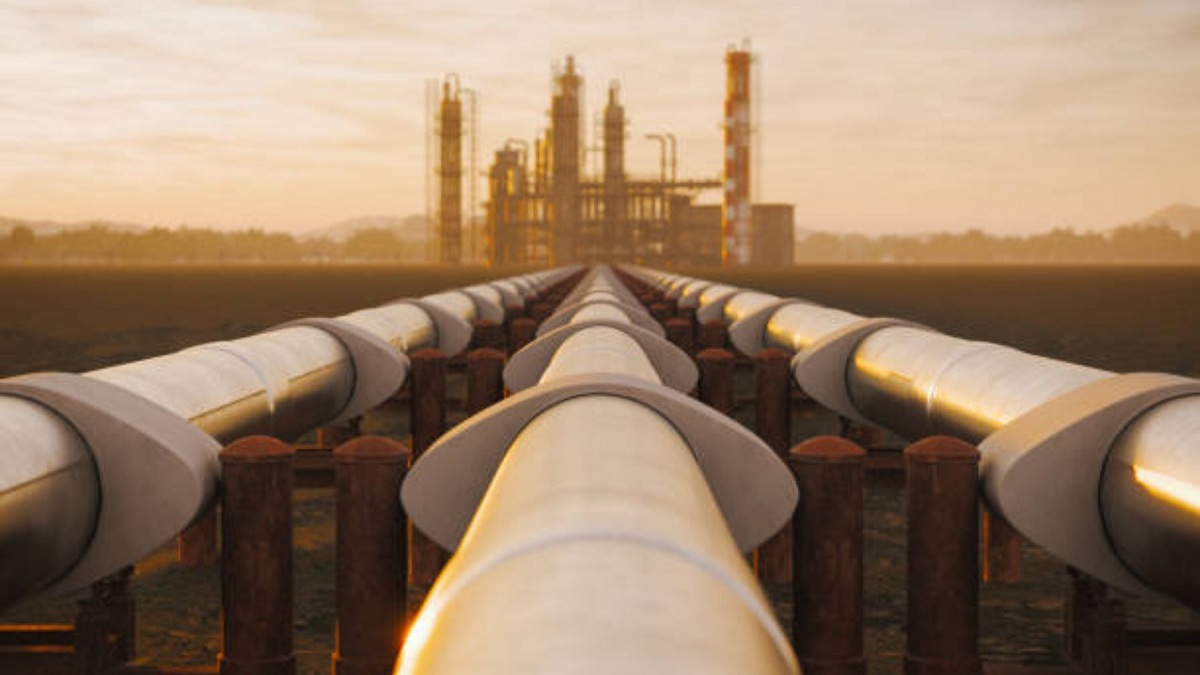
Among the different sources of energy that we have for the home is natural gas. However, many people do not know what is the natural gas, where it is extracted and how it is converted into energy. Natural gas is a fossil fuel that, like coal or oil, is made up of hydrocarbons, a mixture of molecules made up of carbon and hydrogen atoms. Sophisticated geological and physical research has made it possible to discover and exploit deposits of gas produced underground by hundreds of thousands of years of bacterial activity.
In this article we are going to tell you what natural gas is, what its characteristics are, where it comes from and what it is used for.
What is the natural gas

Methane (CH4) is the main component of natural gas, although it also contains other light hydrocarbons in much smaller proportions, such as ethane (C2H6), propane (C3H8), butane (C4H10) or pentane (C5H12). It is usually found at 85% mixed with 10% ethane, 3% propane, 0,1% butane and 0,7% nitrogen. They all have very low boiling points, as low as -158,9°C in the case of methane. While hydrocarbons with 5-10 carbon atoms are liquid at normal temperatures, these low molecular weight hydrocarbons (less than 5 carbon atoms) are in gas or vapor form.
To extract the energy contained in the CH chemical bond, a combustion process must be carried out. combustion is the oxidative (exothermic) reaction of a fuel (gas) with another oxidant (air) called an oxidizer. This transition is accompanied by the release of heat, a phenomenon that can often be perceived by the flames that constitute the source of light and heat. For combustion to occur, the fuel and oxidant must be in contact in the correct proportion, and the mixture must be at a temperature above its ignition temperature.
Taking air as a reference, the relative density of natural gas is from 0,6 to 0,66, that is, it is less dense or heavier than air. Its calorific value, or the heat released per unit volume of complete combustion, is from 6,6 to 12 te/m3.
What is it for

Natural gas was originally used as a source of energy to light cities through public gas lighting systems. Later, with the arrival of electricity, this use disappeared, although the extraction of natural gas did not find use in other processes. Thus, among the latest uses of natural gas, we find the following.
Natural gas has become one more fuel, widely used for the production of electrical energy in high-efficiency power plants, the operation of residential and industrial boilers, and even for transportation, since today it can be used as fuel for vehicles, such as cars or buses.
In 2008, Spain consumed 450.726 GWh of natural gas, 10,1% more than the previous year. In 2008, natural gas accounted for 24% of Spain's primary energy. Already in 1985, this figure was only 2%, which illustrates the growth and importance of this source of energy in Spain, not only from an environmental point of view, but also as a factor in the competitiveness of Spanish companies.
In a broad sense, it can be said that natural gas has the same uses as coal, especially oil derivatives, because it is a fossil fuel, and by burning it energy can be obtained that can be used for human needs.
How does natural gas affect the environment?

Natural gas is a fuel that generally enjoys a good reputation, despite being a source of fossil and polluting energy. This is because when it burns it releases the main greenhouse gas, CO2, into the atmosphere. However, its good reputation comes from the fact that during combustion, the gas is released into the atmosphere in smaller amounts compared to gases from oil and coal. In addition, another reason why it differs from these fuels is that it does not emit sulfur dioxide, one of the polluting gases in urban atmospheres and one of the main causes of acid rain.
This has led, for some, to be considered a transition energy. In other words, a source of energy that, although highly polluting, has less impact on the environment, may shift from oil to coal as energy source until clean energy is fully implemented. But it should be clear that natural gas is a fossil fuel, which means that it is a polluting, non-renewable fuel, whether or not it can be used as a transitional energy source. Learn more about this topic in another Green Ecology article on why natural gas is not a renewable energy source.
On the other hand, while natural gas emits less carbon dioxide into the atmosphere when burned, it is common for a significant portion of natural gas to be released into the atmosphere during extraction. This leads to an increase in the amount of methane in the air, the other major greenhouse gas contributing to climate change along with carbon dioxide. In other words, although it is a less polluting energy source than oil and coal, it is not a clean energy source, nor is it an energy source with zero environmental impact, as some of the companies that sell it would have us believe. .
That said, it is important to know that it is an energy source that, while not environmentally friendly, is less harmful to the planet than other fossil fuels. In this way, although it is not the best option that we can choose, until the energy transition based on clean and renewable energies is not fully implemented, can more actively reduce the impact of other fossil fuels on the planet.
I hope that with this information you can learn more about what natural gas is and what its characteristics are.